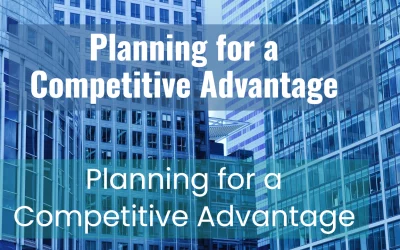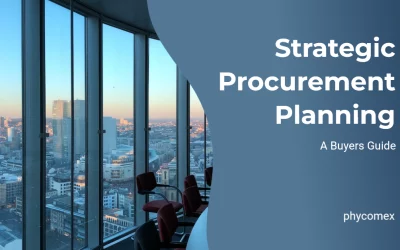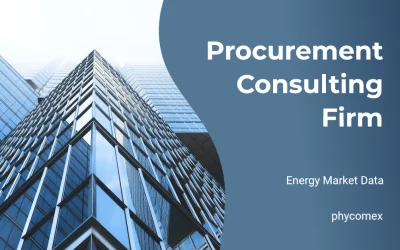When it comes to acquiring goods and services for a business, two terms are often used interchangeably: procurement and purchasing. However, these two concepts differ significantly in their focus, processes, and goals.
To provide a visual representation of these differences, it is helpful to think of procurement as a long-distance race, while purchasing is more like a sprint.
Procurement is a strategic and long-term process that aims to create sustainable relationships with suppliers, reduce costs, and improve the quality of goods and services. It involves analyzing the market, identifying potential suppliers, negotiating contracts, and developing supplier performance metrics.
In contrast, purchasing is a tactical and short-term process that focuses on meeting immediate business needs, such as acquiring raw materials, office supplies, or equipment. It involves placing orders, tracking deliveries, and ensuring that the products meet quality and quantity requirements.
Understanding the differences between procurement and purchasing is essential for organizations that want to optimize their procurement processes, reduce costs, and improve performance.
Key Takeaways
- Procurement focuses on long-term strategic goals, while purchasing focuses on short-term business needs.
- Procurement covers supplier relationship management, risk mitigation, cost reduction, and contract compliance.
- The main difference between procurement and purchasing is that procurement focuses on overall value creation and total costs, while purchasing only focuses on order costs.
- E-procurement helps reduce processing costs, adhere to company policy, and improve employee satisfaction and retention.
Strategic vs Short-term Focus
The difference between procurement and purchasing lies in their focus, with procurement prioritizing long-term strategic goals such as supplier relationship management, risk mitigation, cost reduction, and contract compliance, while purchasing focuses on short-term business needs through regulated steps such as purchase requisition, vendor evaluation, goods receipt, invoice approval, and payment.
Procurement involves a more holistic approach to the acquisition of goods and services, taking into consideration the long-term value and cost-effectiveness of the supplier relationship and the overall impact on the organization. Purchasing, on the other hand, is concerned with meeting immediate needs and ensuring that the procurement process is efficient and compliant.
Long-term planning is a crucial aspect of procurement, as it involves developing and maintaining relationships with suppliers that can provide high-quality goods and services at a reasonable cost. This requires a strategic approach and a deep understanding of the organization’s needs and goals, as well as the competitive landscape and market trends.
In contrast, purchasing focuses on the day-to-day tasks of acquiring goods and services, ensuring that they meet the organization’s immediate needs and that the procurement process is efficient and compliant. While both procurement and purchasing are essential functions in any organization, their focus and objectives are different, and they require different skills and expertise to be successful.
Activities and Processes
Acquiring goods and services involves a series of regulated steps, including assessing vendor capabilities, evaluating supplier performance, and ensuring compliance with company policies and procedures.
Sourcing methods are utilized to identify the best suppliers who can offer quality goods and services at the best prices. These methods involve conducting market research, obtaining quotes, and negotiating contracts.
Once a supplier is chosen, the payment procedures must be established and adhered to. This involves creating purchase orders, receiving goods, verifying invoices, and ensuring timely payments.
To achieve a successful procurement process, it is essential to have effective supply chain management in place. This includes monitoring supplier performance, managing relationships, and mitigating risks associated with the supply chain.
Having a cloud-based procurement system can help streamline these processes and improve visibility, performance, and cost-effectiveness. By implementing e-procurement, processing costs can be reduced, company policies can be adhered to, and employee satisfaction and retention can be improved.
Overall, effective procurement processes are critical to achieving cost savings, improving supply chain performance, and supporting long-term strategic goals.
Benefits of E-Procurement
Implementing e-procurement technology can lead to significant cost savings and improve supply chain performance. E-procurement involves the use of internet-based systems that streamline procurement processes, eliminate paperwork, and reduce manual interventions.
One of the major benefits of e-procurement is reduced processing costs. By automating procurement processes, businesses can reduce processing times and eliminate errors, thereby reducing the need for manual interventions. This leads to significant cost savings, as it reduces the time and effort required to complete procurement activities. Additionally, e-procurement tools offer real-time visibility into procurement processes, which helps businesses make informed decisions and react quickly to changes in supply chain conditions.
Another benefit of e-procurement is improved employee satisfaction. With e-procurement tools, employees can easily search for and purchase goods and services from approved vendors, without having to go through lengthy and complex procurement procedures. This reduces the time and effort required to procure goods and services, which improves employee satisfaction and retention rates.
Additionally, e-procurement tools help businesses adhere to their procurement policies, which reduces the risk of non-compliance and improves overall procurement efficiency. Overall, e-procurement technology is a strategic investment that can help businesses achieve significant cost savings, improve supply chain performance, and enhance employee satisfaction.





0 Comments